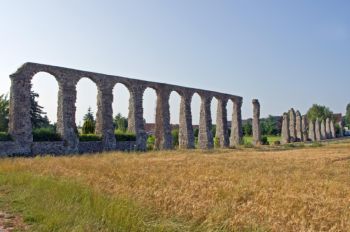Dental plaque reveals key plant in prehistoric Easter Island diet
A University of Otago, New Zealand, PhD student analysing dental calculus (hardened plaque) from ancient teeth is helping resolve the question of what plant foods Easter Islanders relied on before European contact.
Known to its Polynesian inhabitants as Rapa Nui, Easter Island is thought to have been colonized around the 13th Century and is famed for its mysterious large stone statues or moai.
Continue reading


 https://www.flickr.com/photos/sybarite48/9335917742/ under a
https://www.flickr.com/photos/sybarite48/9335917742/ under a  Vintana sertichi. Middle: Digitally segmented version of the skull, with individual bones highlighted in unique colors. Bottom: Reconstruction of the head of Vintana sertichi. – Journal of Vertebrate Paleontology“>
Vintana sertichi. Middle: Digitally segmented version of the skull, with individual bones highlighted in unique colors. Bottom: Reconstruction of the head of Vintana sertichi. – Journal of Vertebrate Paleontology“>